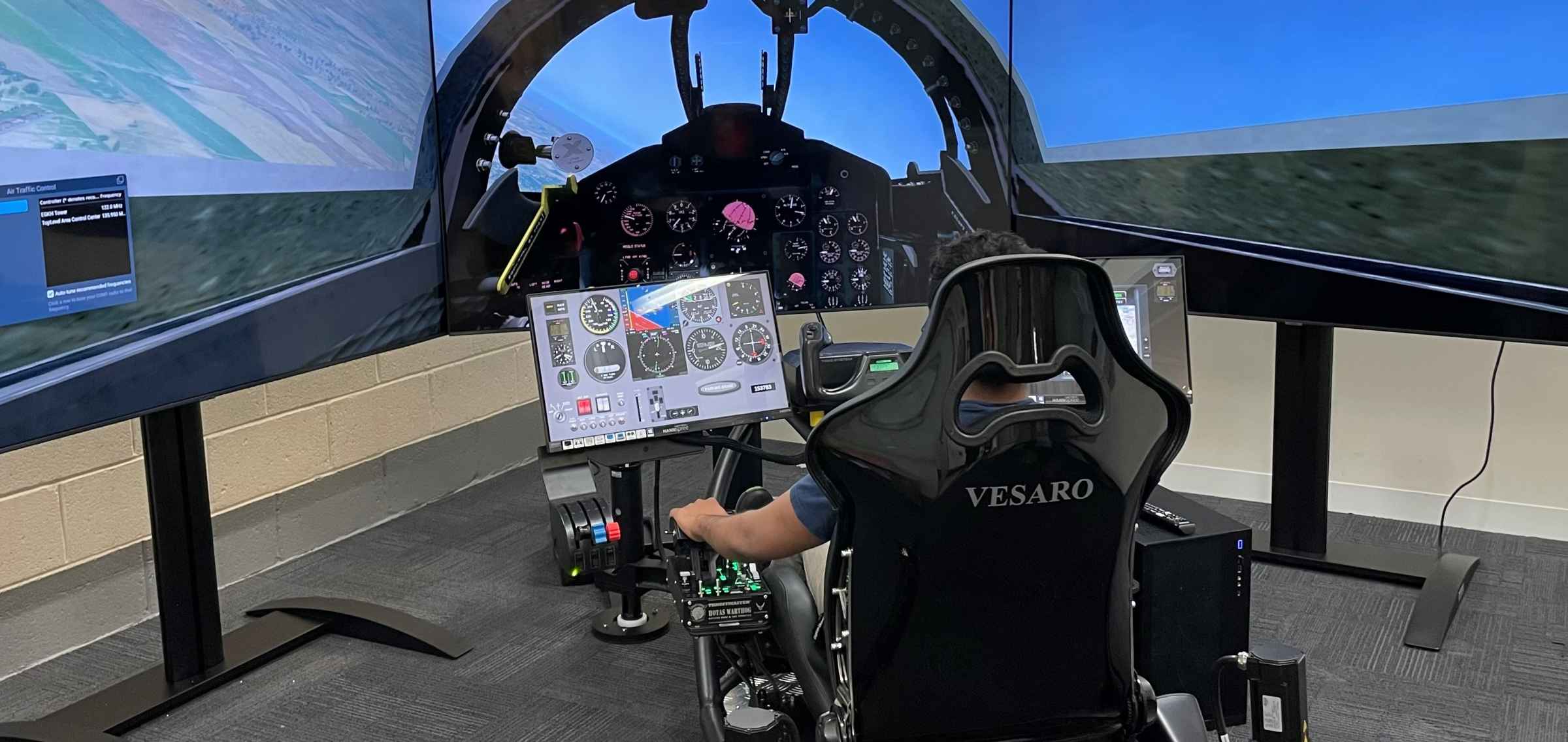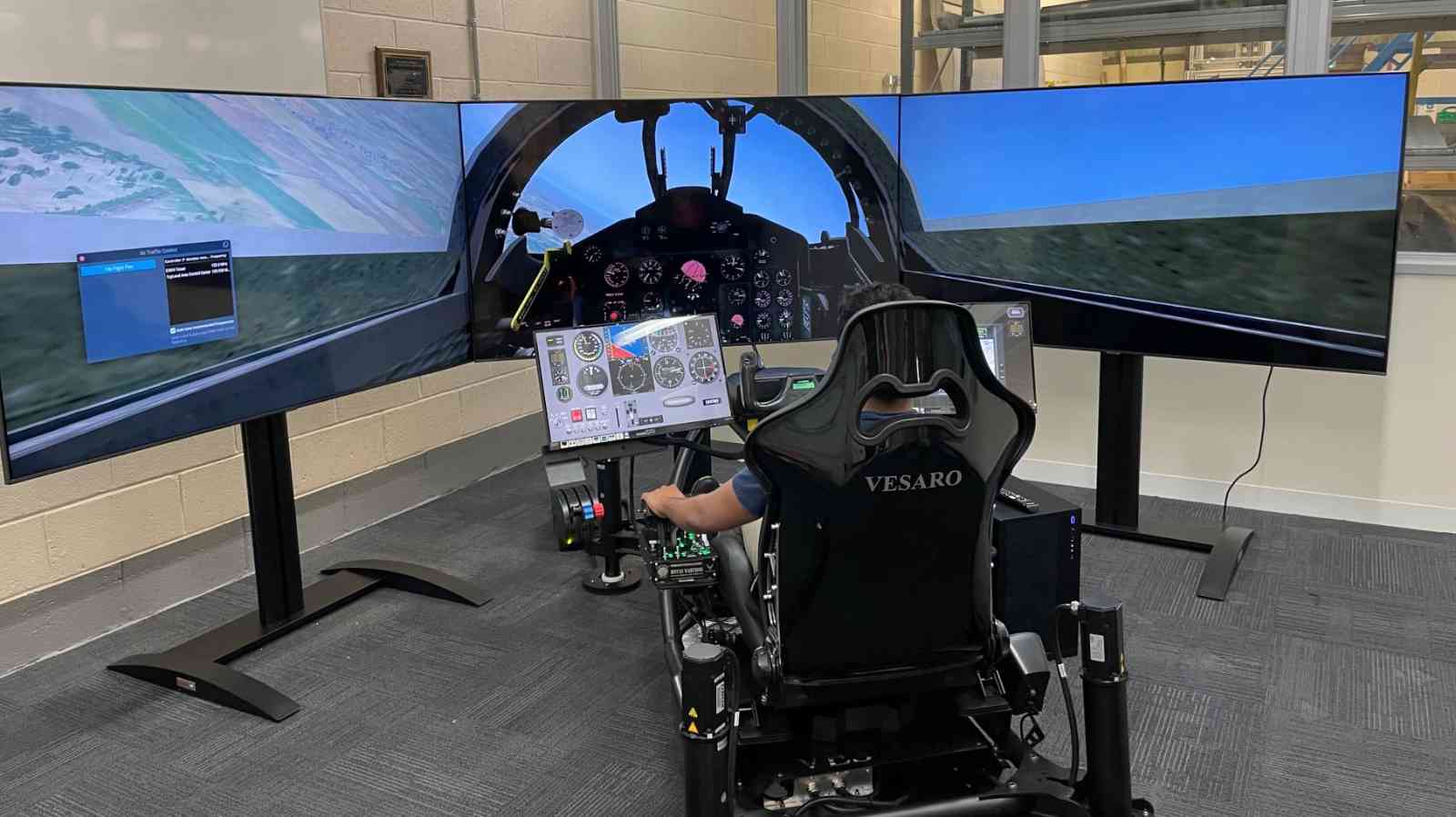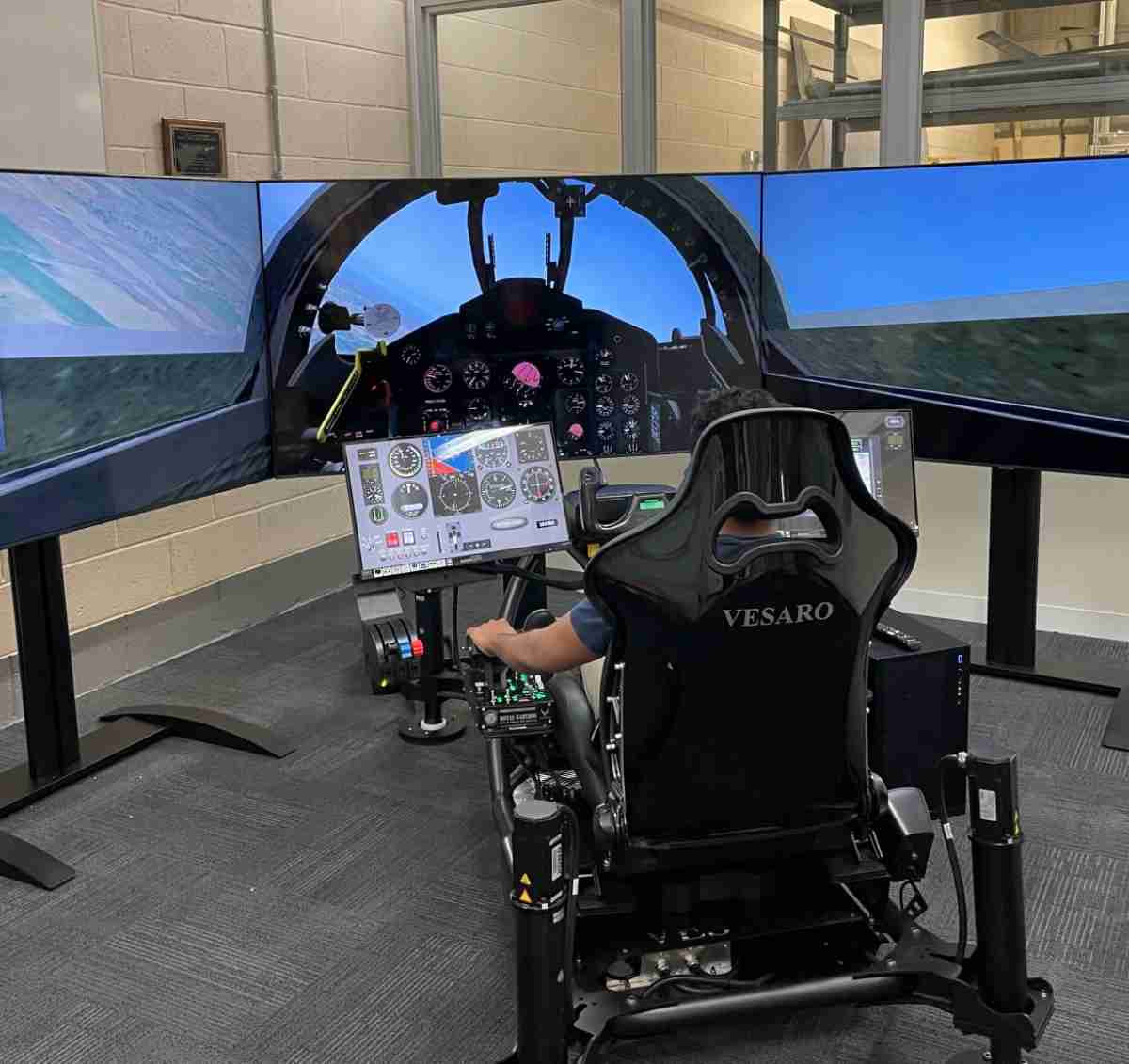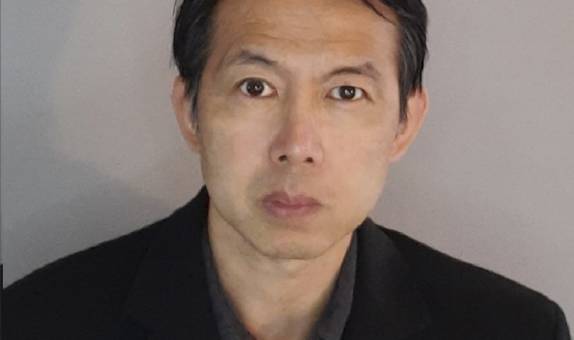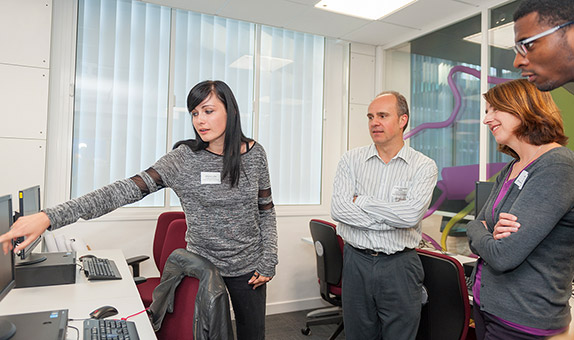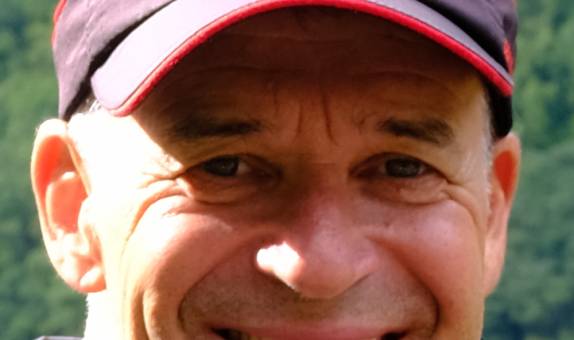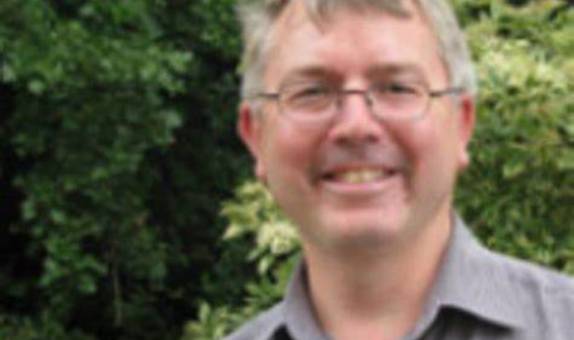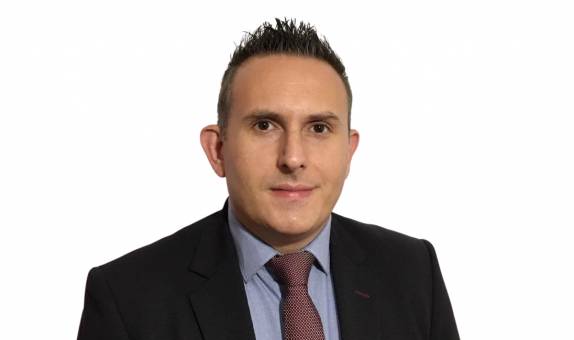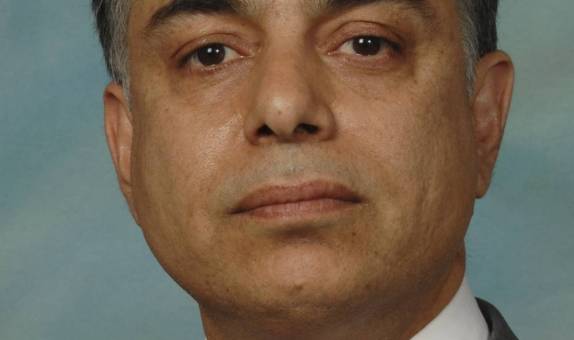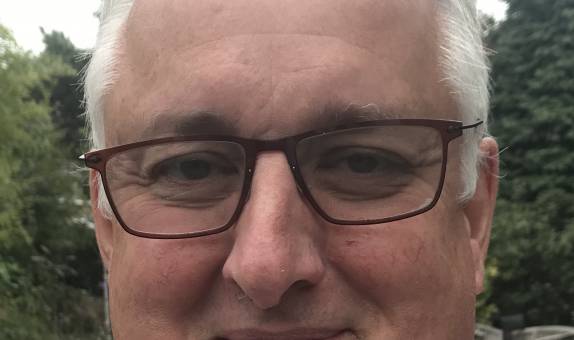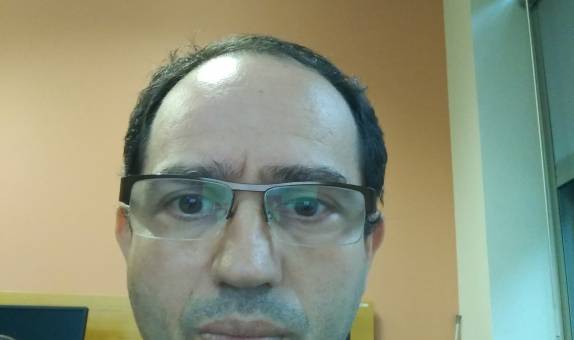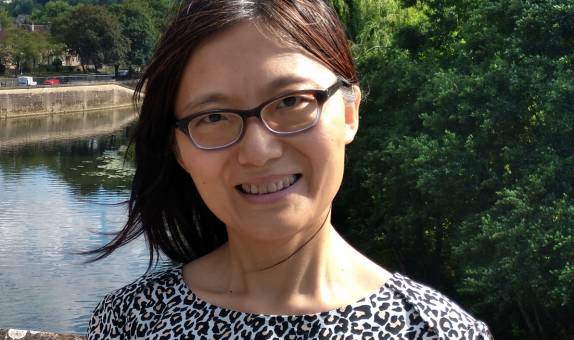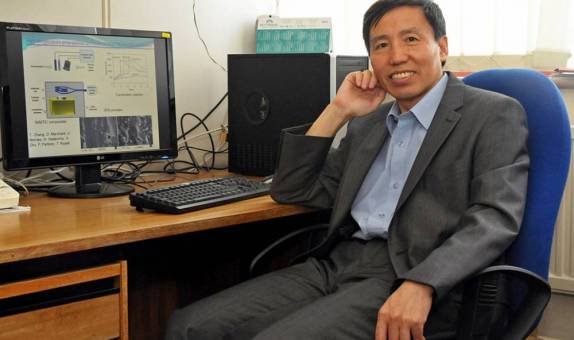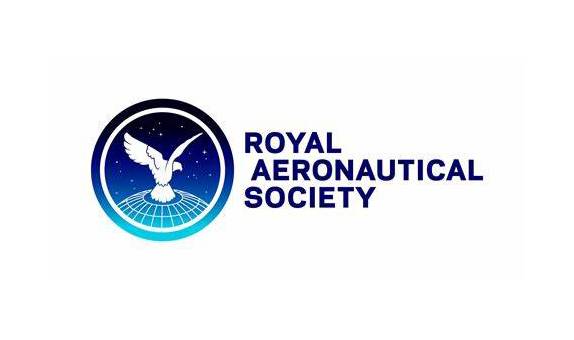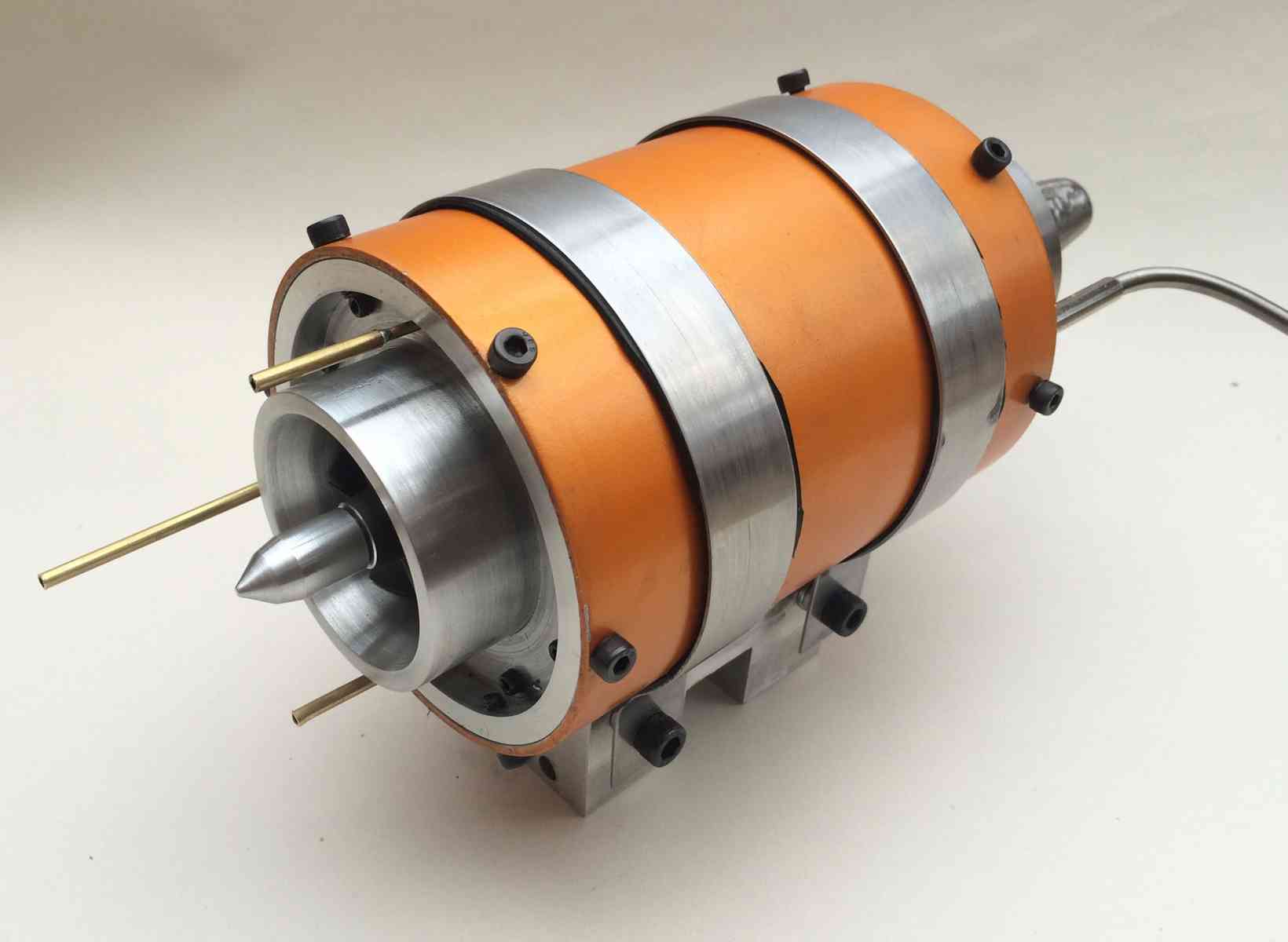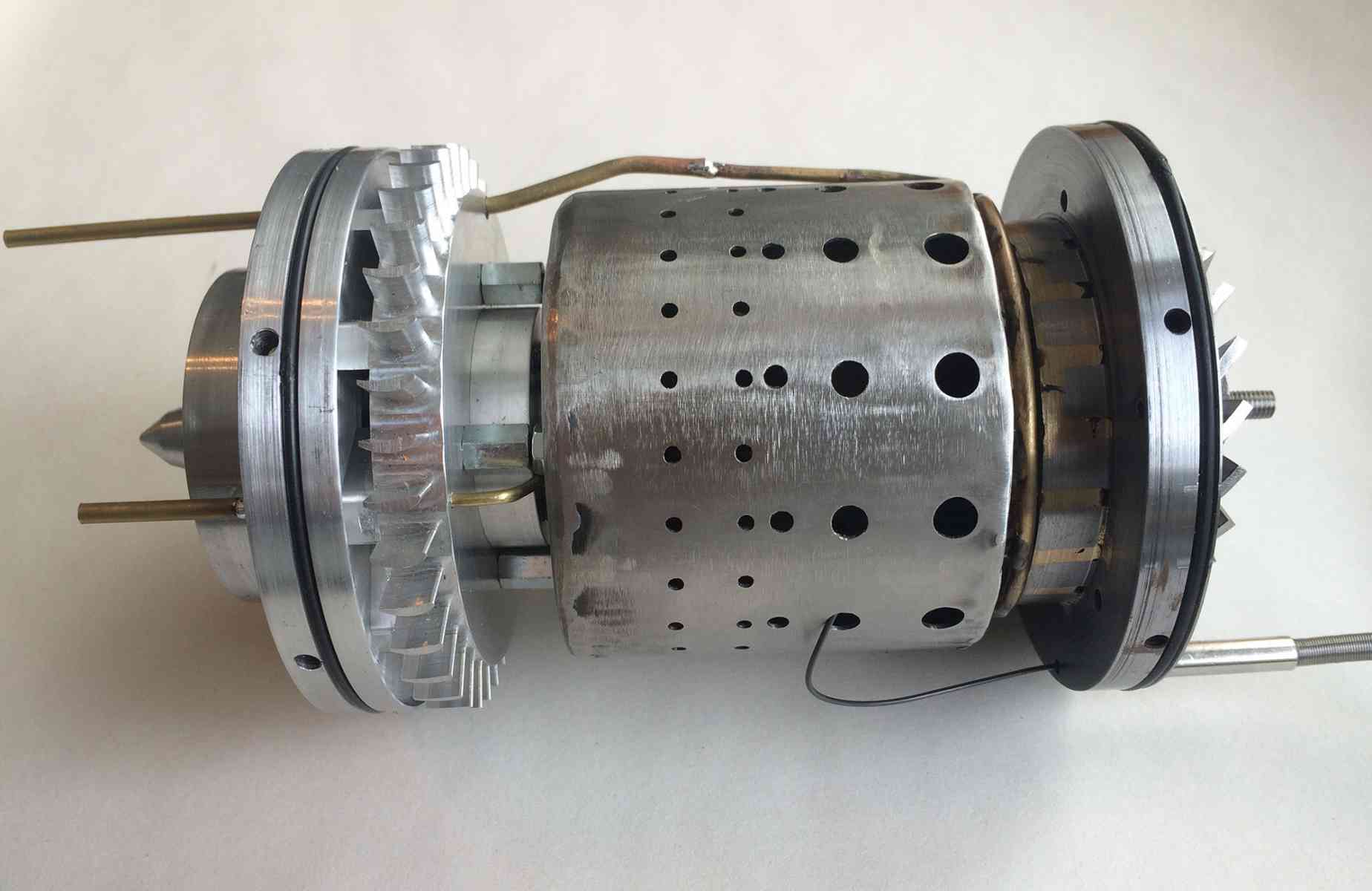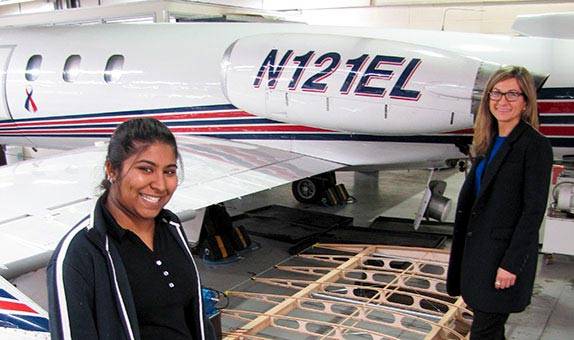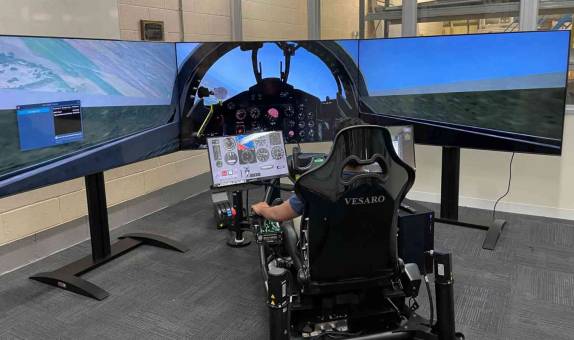Aerospace Engineering MEng/BEng (Hons)
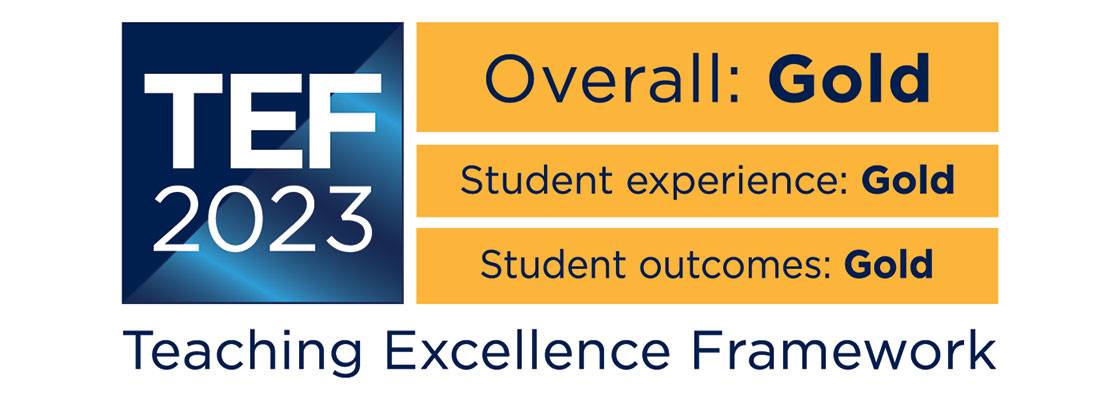
Teaching Excellence Framework (TEF) Gold award
Our commitment to high quality teaching has been recognised with a TEF Gold rating. The University has received an overall rating of Gold, as well as securing a Gold award in the framework's two new student experience and student outcomes categories.
Why choose this course?
Aerospace engineering at Kingston has an innovative curriculum, excellent links with industry and cutting-edge facilities. Kingston is the perfect place to study aerodynamics, propulsion, structures, dynamics and materials.
You'll put theory into practice, applying what you learn to aerospace design problems and participating in a group design project.
We offer both BEng and MEng degrees and a specialised pathway in Space Technology.
The MEng has an extra year of study and can provide a faster route to chartered engineer (CEng) status. It also has the option to pursue an industrial placement.
If you are studying in Sri Lanka please go to our international partner institutions page.
| Course | Attendance | UCAS code | Year of entry |
|---|---|---|---|
| Aerospace Engineering MEng | 4 years full time | H425 | 2024 (Clearing) 2025 |
| Aerospace Engineering MEng | 5 years full time including sandwich year | H426 | 2024 (Clearing) 2025 |
| Aerospace Engineering BEng (Hons) | 3 years full time | H421 | 2024 (Clearing) 2025 |
| Aerospace Engineering BEng (Hons) | 4 years full time including sandwich year | H422 | 2024 (Clearing) 2025 |
| Aerospace Engineering BEng (Hons) | 4 years full time including foundation year | H408 | 2024 (Clearing) 2025 |
| Aerospace Engineering (Space Technology) MEng | 4 years full time | H402 | 2024 (Clearing) 2025 |
| Aerospace Engineering (Space Technology) MEng | 5 years full time including sandwich year | H404 | 2024 (Clearing) 2025 |
| Aerospace Engineering (Space Technology) BEng(Hons) | 3 years full time | H400 | 2024 (Clearing) 2025 |
| Aerospace Engineering (Space Technology) BEng(Hons) | 4 years full time including sandwich year | H401 | 2024 (Clearing) 2025 |
| Aerospace Engineering (Space Technology) BEng(Hons) | 4 years full time including foundation year | H405 | 2024 (Clearing) 2025 |
Important: if you are an international student requiring a Student Route visa to study in the UK, you will need an ATAS certificate if you wish to apply for the Aerospace Engineering MEng course. Read more.
Once you have completed the Aerospace Engineering Foundation Year (UCAS code H408), you can transfer to Aerospace Engineering BEng(Hons), dependent on satisfactory grades.
Please note: Teaching on this course may take place on more than one KU campus.
| Main Location | Roehampton Vale |
Reasons to choose Kingston University
- Both the MEng and BEng degrees are accredited by the Royal Aeronautical Society (RAeS), leading to chartered engineer (CEng) status.
- You'll have access to cutting-edge equipment, such as a flight simulator, wind tunnel facilities, a rocket lab, advanced 3D printers and manufacturing workshops and a satellite ground station. You will participate in a flight test course, onboard a flying laboratory aircraft.
- Employability is a key element of the programme, and you'll enhance your skills throughout the curriculum including through industrial visits, placement, and co-and extra-curriculum activities. Students are encouraged to take part in the Formula Student Competition to design and make a race car.
What our students say
Women in Engineering
What you will study
You can choose to take an optional sandwich year between Years 2 and 3 (BEng (Hons)) and Year 3 (MEng only). MEng students have to study and earn 120 credits in Year 3 while taking their industrial placement using work-based learning by carrying out an industrial individual project as well as applied business and management analysis. They also need to study an aerospace engineering science module using blended/distance learning model (subject to RAeS accreditation).
The Space Technology pathway is the same as the standard programme for the first two years, but students are expected to work on a space-related project in the Engineering Project Management module at level 5. In the final year students must take Space Vehicle Design and work on a space related individual project and group project.
Year 1
Year 2
Year 3
Year 4
Year 1 provides an introduction to aerospace engineering under Professional Practice, and will underpin the skills and knowledge required for further specialised study. You will study a mix of analytical subjects, such as mathematics, structures, dynamics, electronics, thermodynamics and engineering applications, alongside an introduction to the profession of engineering.
Core modules
Navigate for the Professional Engineer
15 credits
Students are introduced to their course learning aims and consider their anticipated learning targets from induction to graduation. Students are guided to identify and take ownership of their personal academic journey through the development and application of academic skills aligned to KU Graduate Attributes and their discipline-specific professional body learning outcomes.
Students are tutored in a range of learning to learn techniques, are introduced to assessment for learning and the role of feedback, reflection and feedforward as an integrated part of their learning journey. This will be supported through active engagement in the KU Navigate Programme enabling students to understand and begin to develop a design thinking approach to Future Skills development.
Engineering Mechanics and Materials
30 credits
The module introduces students to the fundamentals of structural analysis (statics and dynamics) and the mechanical behaviour of a broad range of engineering materials. The mechanics part provides an understanding of the behaviour of particles and rigid bodies whilst stationary and in motion. Bodies such as trusses in equilibrium are studied and the external and internal parameters including force, moment, stress, or strain are defined and calculated.
The analysis of structural components will be developed with theoretical and numerical skills that are necessary in the design of real structures. This section also introduces the dynamics of particles and rigid bodies with their engineering applications. Material test methods will be used to determine the deformations and failures of the various engineering materials.
A selection of materials for engineering applications, such as metals, alloys, polymers, and composites, will be studied including their carbon footprint and their impact on the environment. The module is primarily delivered through lectures supported by tutorial sessions and laboratory-based practical sessions.
Engineering Mathematics I
15 credits
The aim of this module is to provide a thorough background in engineering mathematics and equip students with the mathematical skills essential for solving engineering problems. The topics introduced will serve as basic tools for studies in many engineering subjects. This comprises algebra, functions, statistics and probability, trigonometry, calculus, differential equations and vectors. Students will be empowered to understand and be able to use the language and methods of mathematics in the description, analysis and design of engineering systems. The emphasis is on using mathematical tools to solve engineering problems. The computing software used will typically include MATLAB and Excel.
Thermodynamics and Fluid Mechanics
15 credits
This module introduces mechanical engineering students to the fundamentals of fluid mechanics and thermodynamics. The fluid mechanics section covers the fundamental properties of fluids along with the main basic conservation equations and their engineering applications. It also introduces the concept of dimensions and the SI units of measurement.
Thermodynamics section deals with the relationship between heat and other forms of energy. A variety of topics of engineering and science are dependent on various thermodynamics concepts. You can find applications of thermodynamics everywhere, such as in internal combustion engine or sitting in a room with the air conditioning. The thermodynamics laws that govern the behaviour of various systems will be discussed in depth as they find applications in a variety of disciplines.
The module is primarily delivered through lectures supported by tutorial sessions and laboratory-based practical sessions.
Engineering Design and Manufacture
30 credits
The principal aim of this module is to provide students with a flavour of what is involved in engineering design and to develop the good academic and professional practice needed to succeed during the course and attain professional status.
The module introduces the key aspects involved in planning a project from start to finish, design processes incorporating a sustainability agenda, building an awareness of the interactions across various disciplines, regulatory frameworks and Health and Safety procedures.
The module develops good academic and professional practice by developing skills in self-reflection and recording professional development.
The basic principles of measurement and manufacturing processes in a workshop and testing environment are also addressed in the module.
The module also involves the IMechE Design Challenge as a part of the curriculum, to provide the students with a flavour of how to work in teams to produce engineering artefacts that are capable of accomplishing tasks, as well as developing interpersonal skills in order to enhance the student's employability.
Introduction to Aerospace Engineering/Astronautics
15 credits
Aerospace Engineering core modules
Introduction to Aerospace Engineering
15 credits
The module introduces the student to basic aerodynamics, aircraft systems and propulsion using a flight simulator to provide a frame of reference.
Aerospace Engineering (Space Technology) core modules
Introduction to Astronautics
15 credits
This module is intended to give students an introduction to astronautics, the history of space engineering in the UK and to explore the space and launch environment. The module will also introduce students to basic quality assurance processes and methods used currently in the space engineering industry. Context will be provided through reference to past UK, European and International space missions.
The module content is informed by current space engineering practices and industrial requirements. The content and method of teaching is continually updated with best practices to improve the student's employability within the space industry. The module hopes to develop professional competencies and provide the skills to create, complete and implement requirements to constrain and control the engineering process, and then be able to apply quality assurance processes to a project.
Year 2 will introduce you to specialised topics in aerospace engineering such as aerodynamics, propulsion, structures, dynamics and materials. It includes further study of mathematics, electronics, control and computing. A design-orientated module (Aerospace Engineering Design and Project Management) will apply the principles taught in the other modules to problems of aerospace design.
Core modules
Exploring Engineering Project Management
15 credits
This module considers the principles and practices for the design and management of engineering projects. The nature of engineering project management is discussed in the context of constraints on quality, time, risk, and sustainability. The module broadens the student's knowledge of how organisations undertake and monitor projects.
The module is skills-rich, including the development of teamworking, interpersonal and interdisciplinary skills, critical self-reflection, communication and presentation, time management, and the ability to organise, strategize and prioritise.
A key element of this module will be the participation in an inter-disciplinary design thinking project. Students will contextualise their subject-specific knowledge, skills and behaviours as an interdisciplinary team member charged with developing a solution to a designated sustainability challenge. The teamwork project enables students to demonstrate their ability to explore and contextualise their subject specific knowledge and helps prepare them for their individual project in Level 6.
Aerospace Structures, Materials and Vibrations
30 credits
This module is designed to provide the students in their second year of BEng Aerospace Engineering with an understanding of fundamentals mechanics of materials, aerospace structures design and analysis process, theory of vibration with applications, composite materials and how are they used in aerospace applications.
This module covers the main structural components of aircraft and aircraft airframe basic construction methods and introduces the analysis of linearly elastic problems under axial loading, torsion and pure bending, and analysis of shear stresses and calculation of shear centre.
Presentation of important concepts such as free and forced vibrations of single degree-of-freedom undamped linear systems, types and characteristics of damping and its effects on the response, multi degree-of-freedom systems, response to harmonic excitation is introduced as part of this module.
Composite materials and their applications in aerospace primary structures and their advantages in terms of high-strength and stiffness to weight ratio are discussed.
The lectures are supported by practical aerospace structures, materials, and vibrations laboratories and tutorials.
Aerospace Electronic and Control Systems
30 credits
Aerodynamics and Propulsion
30 credits
The basics of aerodynamics, aircraft performance and aerospace propulsion are introduced with a view to provide the ability to analyse, formulate and solve elementary problems. Students will have the opportunity to apply the theoretical knowledge into practice in this module via examination.
Computer Aided Aerospace Engineering Design
30 credits
The purpose of this module is to introduce students to computational simulation process like finite element analysis (FEA) and computational fluid dynamics (CFD) approach. ANSYS package will be used to conduct FEA and CFD analysis on real-world engineering problems.
Students will get the opportunity to apply theoretical knowledge gained from Aerospace Structures, Materials and Vibrations to analyse structural behaviour of a model based on its material properties and optimise their design.
The knowledge gained from Aerodynamics and Performance module will be used to conduct CFD analysis over an aerodynamic body where students can learn to validate their computational results with experimental or other numerical data. This would equip students with up-to-date flow and structure analysis techniques.
Aerospace Engineering core modules
Aircraft Performance and Design
15 credits
Aerospace Engineering (Space Technology) core modules
Space Technology Design
15 credits
This module is intended to teach students about safe testing and working practices in performing hazardous operations conducted in the space industry. Student will learn how to adapt their testing to take into account EDI considerations and how to write and enact test procedures. Hands-on practical testing will be developed. Context will be provided through reference to past UK, European and International space missions and the development of safe practices in hazardous environments.
In Year 3, you will deepen your knowledge of specialised aerospace engineering subjects and will broaden your expertise in other areas of engineering. BEng students undertake a major group design project and an individual research project along with business and management as well as further and more in depth studies of aerodynamics, propulsion, structure, materials and dynamics including applied computational techniques widely used in industry. MEng students have the opportunity of integrating industrial placement with further studies using a combination of work-based learning as well as blended and distance learning (subject to accreditation by RAeS).
Core modules
Applied Business Management
15 credits
Students will demonstrate the ability to apply their developing professional skills competencies in their chosen area and will ensure they have a broad understanding of the business environment in which professional activities are undertaken. The module will develop the student's technical, management and interpersonal skills required to perform in a team environment and prepare the students for employment and entrepreneurship.
Students will participate in Kingston University's Bright Ideas competition where they will work together as a team to develop a business idea of their choice. To do this they will need to interact with relevant stakeholders outside the University.
Students will be guided to interact with professional and learning communities beyond the University and reflect on these interactions. This may include participation in co-curricular events such as subject-specific and career development events (e.g. talks, workshops, speed interviews), networking opportunities offered by the subject-specific professional bodies, exploring pathways to professional chartership/membership, leveraging interactions with professionals in the development of the final year research project and, reflecting on the co-benefits of these interactions.
Further Aerodynamics
15 credits
This module is designed to extend students' knowledge and understanding of aerospace aerodynamics, as well as to develop practical skills of using CAE tools in aerospace engineering applications. Subsonic, supersonic, compressible, incompressible, boundary layer, inviscid and viscous flows are all considered in High-speed and Low-speed Aerodynamics. The module would further help students enhance their numerical skills to conduct CFD analysis on advanced aerospace engineering problems.
Further Aerospace Structures
15 credits
This module is designed to provide the students in their third year of BEng Aerospace Engineering with an advanced understanding of structural design and analysis of aerospace structures.
Aerospace structures such as aircraft wing, fuselage, control surfaces, vertical and horizontal stabilizer and spacecraft structures such as satellite frame are generally assembled from thin-walled sheets. Each section would have a thin skin covering it, and the skins would be reinforced by many Z, C, or T section stringers. Such a structure would require extensive and time-consuming analysis. In order to simplify this, structural idealisation should be carried out to support different types of structural loading.
This module covers loads on the aircraft, V-n diagrams, materials used, and airworthiness requirements, energy methods in structural analysis, structural analysis of thin walled open and closed idealised section beams, bending of unsymmetrical wingbox cross-sections, shear flow under torsional and transverse loading and angle of twist of multicell wingbox sections, structural analysis of aircraft sub-structures and elastic stability.
Finite element applications to aircraft structures with lab sessions will be conducted, and demonstration problems will be solved using widely used finite element software's in the aerospace industry.
Individual Project
30 credits
Working on a topic of their own choosing, the student, with minimal guidance from their supervisor, should apply approximately 285 hours of individual time into the analysis of the problem and determination of the best solution or course of action. That analysis can take a variety of forms ranging from an in-depth comparison of a number of already documented potential solutions to the collection and comparison of experimental and theoretical data. The topic investigated should ideally be of an aircraft operational or engineering nature.
Aerospace Engineering core modules
Flight Dynamics and Propulsion
30 credits
Aircraft Design Project
15 credits
This module gives BEng Aerospace Engineering students the opportunity to integrate and apply their prior knowledge and develop their analytical skills to the design of aircraft vehicle beginning with just a simple set of design requirements. It also introduces them to the multi-stage approach and methods typically used by vehicle design teams.
Students will work in small groups to analyse a given design brief, decide on a project plan, and allocate resources. Throughout the activity, they will use an appropriate design process method, which will result in the creation of conceptual and preliminary designs.
By giving students hands-on experience with every step of the aircraft design process and a thorough understanding of multi-discipline design, this module's applied component makes sure that students are prepared to meet the needs of their future employers and positions them for rapid career advancement.
Aerospace Engineering (Space Technology) core modules
Further Space Vehicle Engineering
30 credits
This module is intended to further teach you space systems engineering, as applied to the design of space vehicles, to give a detailed understanding of space vehicle design, the space project cycle and insight into the core components of a space vehicle.
Context will be provided through reference to past UK, European and International space missions and the development of a system model.
The module content is informed by current space engineering practices and industrial requirements. The content and method of teaching is continually updated with best practices to improve your employability within the space industry. The module hopes to develop professional competencies and provide the skills to create, complete and implement a complex system model to a space mission project.
Space Technology Design Project
15 credits
This module is intended to teach students how to gather and analyse engineering test results working as part of a team. Students will be taught how to critically analyse gathered results and interpret their meaning. Students will learn how to communicate these to technical and non-technical audiences and how to best present these in a way to assist commercial and academic activities in the wider sector. Context will be provided through reference to past UK, European and International space missions and the development of a system model.
The module content is informed by current space engineering practices and industrial requirements. The content and method of teaching is continually updated with best practices to improve the students employability within the space industry. The module hopes to develop professional competencies and provide the skills to create and complete engineering-based grant applications fusing technical knowhow with business acumen.
Year 4 of the MEng course includes a multidisciplinary group design project that helps to integrate and apply your academic knowledge, develop your teamworking and communication skills, and increase your understanding of real-world engineering issues.
Core modules
Advanced Computational Fluid Dynamics
15 credits
This module extends your knowledge and skills beyond the basic fluid mechanics methods which are normally introduced at early undergraduate level, and to provide a theoretical and analytical introduction to Computational Fluid Dynamics (CFD). In the lectures, emphasis is placed on the numerical models and analytical techniques in fluid dynamics and heat transfer and some of the more advanced theories behind CFD.
The module also provides you with advanced computational knowledge in fluid dynamics, therefore enhancing your employment potential in a wide range of industries.
Advanced Structural Analysis
15 credits
The finite element analysis is a numerical method for solving problems of engineering and mathematical physics. Currently, Finite Element Analysis (FEA) is widely used in engineering design of advanced structures. In FEA, mathematical assumptions are made for solving problems. Advanced structures are also highly prone to vibration due to their flexible nature while experiencing dynamic loads, if undetected can result in catastrophic failures. A structure could have several bending and torsional modes and with every mode there will be a corresponding natural frequency, damping ratio and mode shape. It is therefore important to be able to analytically predict these parameters.
This module covers introduction to FEA and structural dynamics. For FEA basic theory, and analysing stresses, deflections, and temperatures are covered. For structural dynamics, the primary parameters associated with vibration are identified; these include natural frequencies, damping, mode shapes and responses under operating dynamic loads. Examples of good practice for safe and effective application are presented.
This module will be particularly applicable for engineers and scientists who want to understand the fundamental theory of FEA and structural dynamics and gain understanding of underlying theories behind these techniques.
Advanced Engineering Materials
15 credits
The module is structured in a way to develop an in-depth understanding in material science and engineering associated with advance materials, its development techniques and coatings together with materials selection methods employed by engineering consultants. The module is indented to deepen the understanding between relationship of material design, manufacturing processes and material properties by providing examples from various industries.
The module is intended to provide students with intellectual knowledge on advance materials which will allow students to enhance their employability perspectives or to continue their research. The core factual materials are provided via Canvas with keynote lectures used to explain manufacturing techniques, materials development for utilised in various industries.
Advanced CAD/CAM Systems
15 credits
Group Design Project
30 credits
Aerospace Engineering core modules
Aerospace Design and Analysis
30 credits
Computers and software are normally used in modern engineering design and manufacture of advanced products and processes. The designers usually use finite element analysis (FEA) for structural integrity analysis and computational fluid dynamics (CFD) for predicting the behaviour of complex fluid flows encountered in typical engineering applications. This module is designed to meet the core requirement for students in the MSc Aerospace Engineering course by introducing FEA and CFD technologies and skills for solving advanced aerospace design and analysis problems, by means of practical workshops using commercial FEA and CFD software.
The first half of the module aims at introducing the principles of the modelling statics and dynamics problems with FEA and to critically assess and evaluate the results. The second half of the module aims to familiar with how to use CFD software to solve flow aerodynamics and heat transfer problems. In the practical sessions, emphasis is placed on the solution of structural and fluids problems in a realistic aerospace engineering context and on giving students the opportunity to develop awareness of the limitations of FEA and CFD software and to develop an understanding of good practice in their applications.
Aerospace Engineering (Space Technology) core modules
Space Mission Analysis and Design
30 credits
This module further equips graduates with a good understanding of the challenges of space engineering, providing a set of tools and references to tackle future design problems, and a set of industrial contact within to help begin their careers. Context will be provided through reference to past UK, European and International space missions.
This module builds upon the knowledge gained from the Level 6 Astro modules this module is intended to provide experience in space mission analysis and design through a range of largely self-taught activities, lectures, seminars, and short written assignments.
The content is reviewed to reflect the current aims and objectives of the space industry through best practices, industrial and cost requirements. The material is updated on a regular basis highlighting the current trends within the sector.
Please note
Optional modules only run if there is enough demand. If we have an insufficient number of students interested in an optional module, that module will not be offered for this course.
Extended degree with a foundation year
If you would like to study one of our engineering degrees at Kingston University but are not yet ready for Year 1 of an undergraduate course, a foundation year is ideal. Please see the engineering foundation year course page for details.
Department of Aerospace and Aircraft Engineering
Future Skills
Knowledge to give you the edge
Embedded within every course curriculum and throughout the whole Kingston experience, Future Skills will play a role in shaping you to become a future-proof graduate, providing you with the skills most valued by employers such as problem-solving, digital competency, and adaptability.
As you progress through your degree, you'll learn to navigate, explore and apply these graduate skills, learning to demonstrate and articulate to employers how future skills give you the edge.
At Kingston University, we're not just keeping up with change, we're creating it.

Entry requirements
If you would like to join us through Clearing 2024, please call our Clearing line on 0800 0483 334 (or +44 020 8328 1149 if you are calling from outside the UK) and speak to our friendly and knowledgeable hotliners who will be able to provide information on available courses and will guide you through your options.
Please note the entry requirements listed below are for 2025 entry only.
Teaching and assessment
Scheduled learning and teaching on this course includes timetabled activities including lectures, seminars and small group tutorials.
It may also include placements, project work, workshops, workshops in computer labs, and laboratory workshops.
Who teaches this course?
The course is taught by the Department of Aerospace and Aircraft Engineering. Staff have a wide range of experience across research and industry and continue to practice and research at the cutting edge of their discipline. This ensures that our courses are current and industry informed ensuring you get the most relevant and up-to-date education possible.
We have a dedicated campus for engineering students at Roehampton Vale, a short journey from Kingston town centre and close to Richmond Park.
We offer a wide range of specialist facilities on site, supported with software technology and laboratory technicians.
Renowned companies are involved in course delivery, placements, final year projects and industry talks. Companies range from global leaders KLM Engineering, Marshall Aerospace and the Defence Group, Airbus UK, Astrium Eads, GE Aircraft and Lockheed, to small and medium enterprises such as Aero Optimal, Aircraft Research Associates and Aim Aviation.
Postgraduate students may run or assist in lab sessions and may also contribute to the teaching of seminars under the supervision of the module leader.
Fees for this course
Additional costs
Depending on the programme of study, there may be extra costs that are not covered by tuition fees which students will need to consider when planning their studies. Tuition fees cover the cost of your teaching, assessment and operating University facilities such as the library, access to shared IT equipment and other support services. Accommodation and living costs are not included in our fees.
Where a course has additional expenses, we make every effort to highlight them. These may include optional field trips, materials (e.g. art, design, engineering), security checks such as DBS, uniforms, specialist clothing or professional memberships.
Facilities
There is a wide range of facilities for practical work at our Roehampton Vale campus, where this course is based. You will have access to a modern environment with the latest technology, including:
- the rocket propulsion laboratory is a fully equipped rocket propulsion test lab for testing and firing of live rockets for data acquisition. Here you can fire rocket engines you have designed and constructed
- a fully-equipped manufacturing workshop where you can manufacture your rocket engine designs using the extensive range of equipment – including CNC machines
- 3D rapid prototype printer allowing you to print off your computer designed models for testing and evaluation
- industry-standard test and experimental equipment for metrology, robotics, fatigue and quality control
- state-of-the-art computing facilities for computer aided design (CAD) and other specialist software
- a mission control room equipped with high-performance PCs with tri-screen setup, for planning and operating space missions
- a flight simulator where you can programme a mathematical model of your design into the simulator and then monitor the results
- large-scale wind tunnels that enable testing in winds of up to 90 miles per hour
- laser doppler anemometry system which allows us to make very accurate velocity measurements in the wind tunnel.
After you graduate
Our graduates have gained jobs with Boeing, BAE Systems, Qinetiq, Airbus, Lockheed Martin, AWE, Rolls-Royce, Thales, General Electric and British Airways. Many graduates go on to study at masters and doctoral level.
Accreditation
The Aerospace Engineering MEng course is accredited by the Royal Aeronautical Society for 2018 entry and satisfies, in full, the academic requirements for Chartered Engineer (CEng) and Incorporated Engineer (IEng) registration.
The Aerospace Engineering BEng(Hons) course is accredited by the Royal Aeronautical Society for 2018 entry and satisfies, in part, the academic requirements for Chartered Engineer (CEng) registration and in full, Incorporated Engineer (IEng) registration.
Find out more about the full criteria and validity for Chartered Engineer (CEng) status and Incorporated Engineer (IEng) status.
This degree has been accredited by the Royal Aeronautical Society under licence from the UK regulator, the Engineering Council. Accreditation is a mark of assurance that the degree meets the standards set by the Engineering Council in the UK Standard for Professional Engineering Competence (UK-SPEC). An accredited degree will provide you with some or all of the underpinning knowledge, understanding and skills for eventual registration as an Incorporated (IEng) or Chartered Engineer (CEng). Some employers recruit preferentially from accredited degrees, and an accredited degree is likely to be recognised by other countries that are signatories to international accords.
Please check the Engineering Council website for more information.
Work placement year
How you can work in industry during your course
Placements:
- provide work experience that is relevant to your course and future career
- improve your chances of graduating with a higher-grade degree
- enhance your CV
- lead to a graduate job
- enable you to earn a year's salary whilst studying (the vast majority of placements are paid)
- help you to select your final-year project.
"To be successful, tomorrow's leaders will need to be far more rounded individuals than ever before. They will collaborate in pursuit of shared goals. They will guide, challenge and support...They will have an appetite for change and a hunger for continuous improvement, and they will have an ethos of learning and development..." Jeremy Darroch, Former Chief Executive, Sky.
"Doing a placement year effectively gives you one foot in the door of a future job and to stand out from the crowd... as well as enhancing my CV... and future interviews. It's a great motivator to be successful in my studies as it only serves to open even more doors and gain more skills." Placement student at Jagex Games Studios Ltd.
There is a lot of support available for students looking to secure a placement (e.g. a jobs board with placement vacancies, help with writing CVs and mock interviews). Getting a placement and passing the placement year are ultimately the student's responsibility.
Examples of placements
Placements can be with large multinational companies, international companies, local companies and small start-ups; offering a diverse range of posts. Here are some examples of employers and roles:
| Construction-based placement employers | Construction-based placement roles |
|---|---|
| RG Group Multiplex Costain Willmott Dixon Fluor |
Assistant site manager Assistant trades package manager Assistant logistics manager Health and safety officer Construction engineer |
| Science-based placement employers | Science-based placement roles |
| Reckitt and Benckiser GSK Drug Control Centre Minton Treharne and Davies Ltd Various local and international hospitals |
Bioanalytical sciences Lab assistant Pharmacy assistant Sports coach |
| Engineering-based placement employers | Engineering-based placement roles |
| Airbus BAM Nuttall Nissan Bosch Wozair |
Analysis of aircraft structure Construction resources specialist Site engineer assistant |
| Computing and IS-based placement employers | Computing and IS-based placement roles |
| Disney Sony Interactive Entertainment Europe IBM McKinsey Intel |
Database coordinator Software developer Website developer App developer |
| Mathematics-based placement employers | Mathematics-based placement roles |
| Lloyds Banking Group AXA Allianz PAU Education, Spain |
Analyst Investment solutions Research analyst Accounts assistant |
Student work
"I'm just going into my final year of the MEng. I chose the option to do a sandwich year and did a placement at Airbus. Kingston University stood out for me because of its state-of-the-art facilities. They have a hands-on approach coupled with the theory that engineers must learn to be successful. With flexible machine labs and experienced technicians, I was able to spend all the time I needed working on my dissertation."
"My project was to design, develop and build a micro jet engine using design by analysis techniques. This meant I had to produce a preliminary design using turbine cycle analysis and from there produce a detailed CAD (computer aided design) model. Air flow simulations were then performed using the CFD (computational fluid dynamics) package, ANSYS CFX. The airflow characteristics were observed and from the results each main component was redesigned and optimised before manufacture to ensure the engine would work."
Engine specifications:
- Thrust: 50 to 75 Newtons
- Max RPM: 150,000
- Weight: 2 kg
- Fuel: Propane gas
"The idea of using design by analysis came from my placement year at Airbus, where I worked within the simulation and modelling team for landing gear systems. Testing of the engine is planned for early next month."
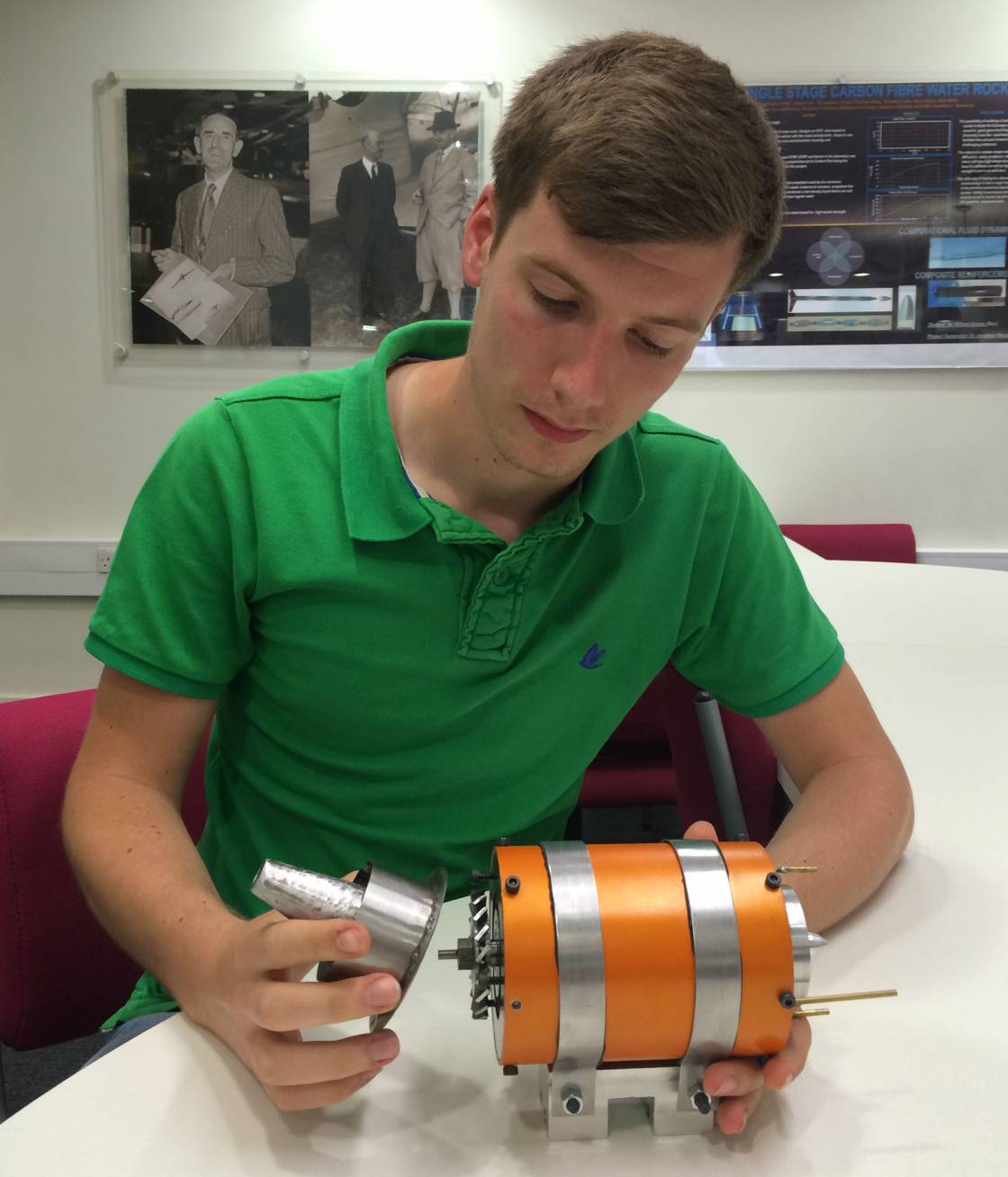
Images from Aidan's work
Here is a selection of Aidan's work.
What our students say
Key information set
The scrolling banner(s) below display some key factual data about this course (including different course combinations or delivery modes of this course where relevant).
Course changes and regulations
The information on this page reflects the currently intended course structure and module details. To improve your student experience and the quality of your degree, we may review and change the material information of this course. Course changes explained.
Programme Specifications for the course are published ahead of each academic year.
Regulations governing this course can be found on our website.
